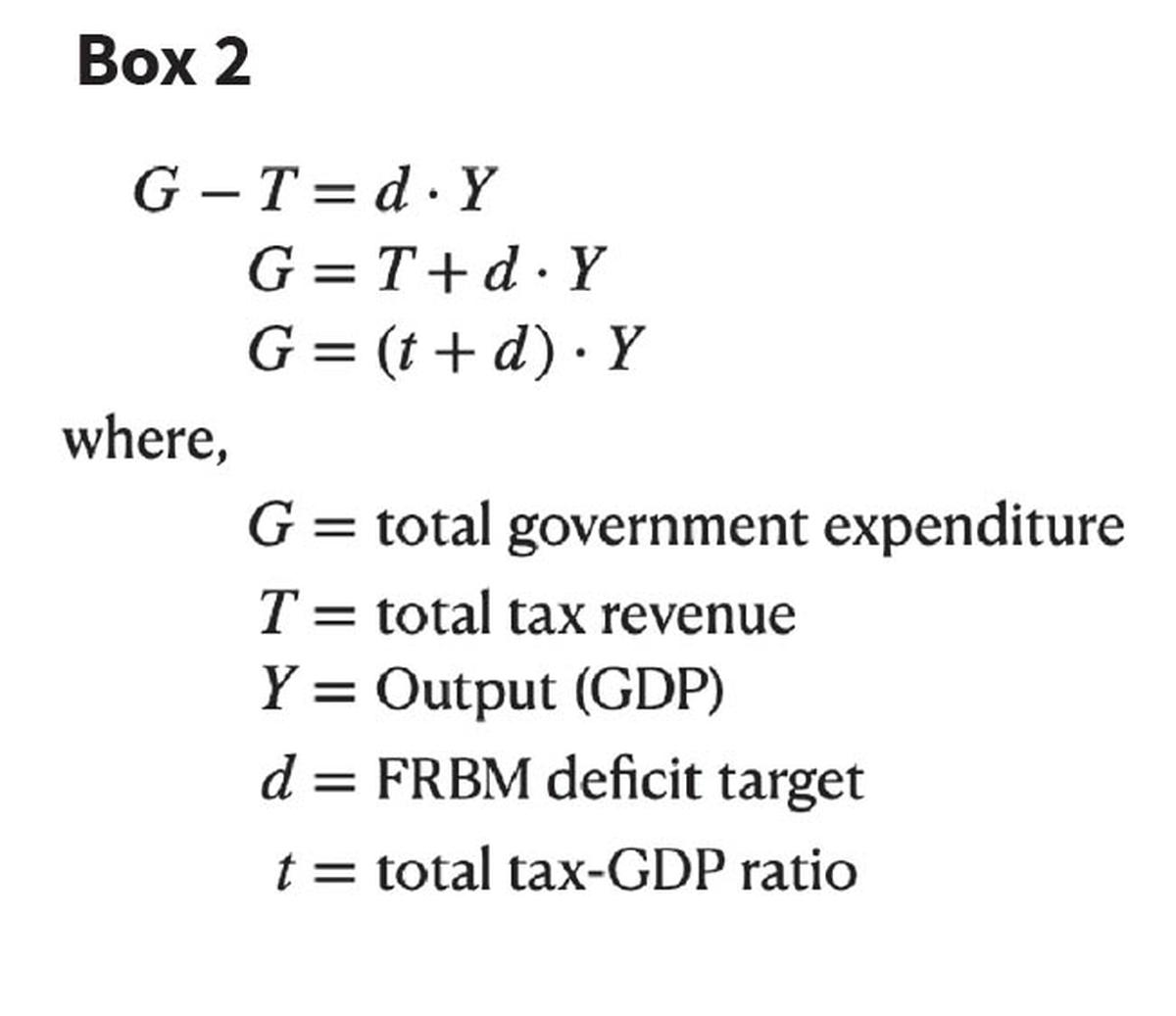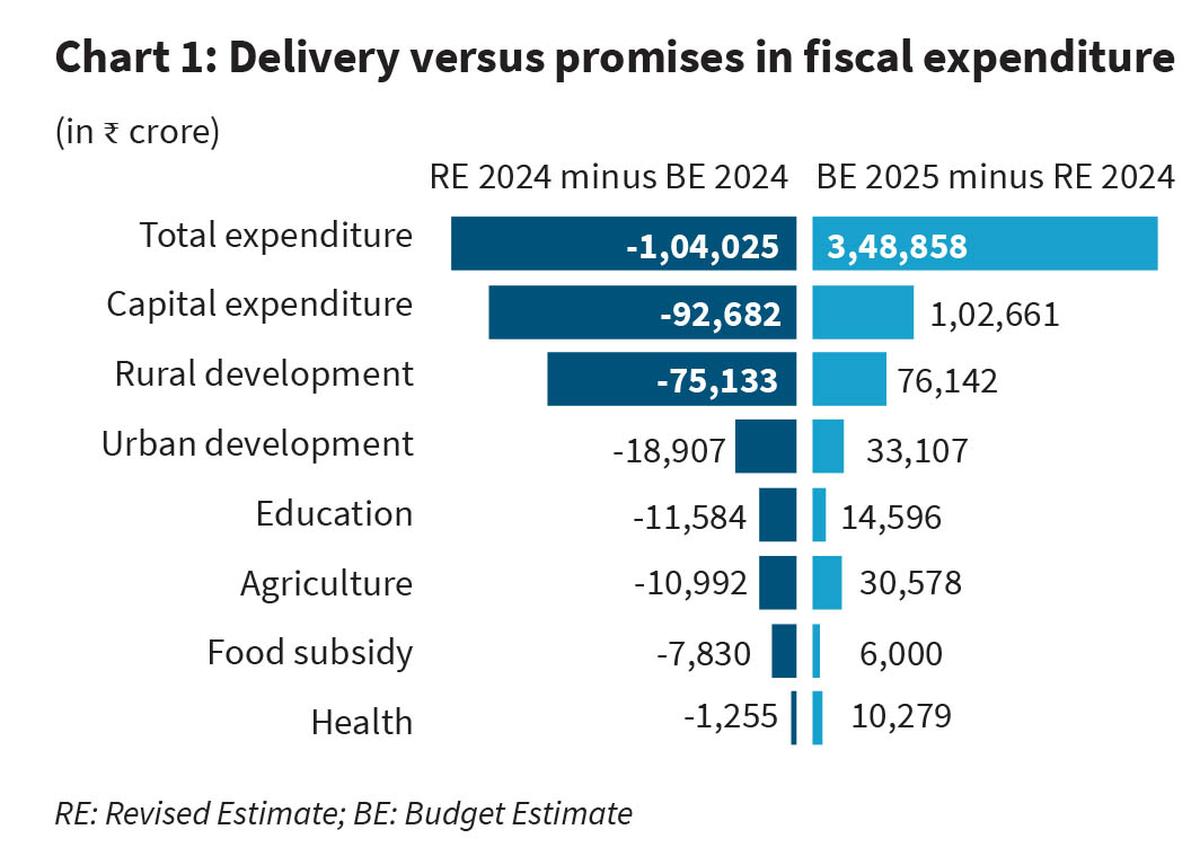Why the tax cuts are a one one way gamble


A worker cleans the floor of a showroom during a presentation of the union budget 2025-26, in Mumbai, on February 1. Photo Credit: PTI
IT. To be sure, the tax-paying middle class in India is nowhere near “middle” of the income spectrum and, hence, those who would directly benefit from these cuts are a minuscule minority (between 2-3% of the population). Nevertheles, it is indeed a significant cut in tax rates for every class of taxpayer. For that Earning Between ₹ 7- ₹ 12 Lakh A Year, It is a Complete Tax Rebate, which was earlier applicable to only these beLow ₹ 7 Lakh. For others earning more than ₹ 12 lakh, the exemption limit has increased from ₹ 3 to ₹ 4 lakh. The rest of the tax slabs have also also changed favor along with a cut in the marginal tax rates. So, Everyone earning more than ₹ 7 Lakh Stands to Gain in Taxes Payable. No wonder this step, as noted by the finance minister, will lead to a Fall in tax revenue to the tune of ₹ 1 Lakh Crore. This is 8% of the direct income tax collection of ₹ 12.57 Lakh Crore in the Current Year.
Also read: Union Budget 2025: Tax Break will give a fillip to Slowing Economy, Says Center
Budgets are an exercise in bot a redistribution of income (through difference differential variation in tax rates) and affecting the level of Economic Activity Throux its experture decisions.
Since the tax rebate has implications for both, and a lot of the plans of the 2025 budget ride on it, this pie primarily focuses on this unprecedened fall in income tax rates.
The logic behind the tax rebates
Despite the fall of 8% in the effective tax rate as a result of this policy, the budget has estimated direct tax collection to go up by 14%. A Simple Arithmetic Calculation Delhi Tell Us That This Requires The Rise of Income to Be Around 24% (See box 1).

With a projected growth of 10.1% in nominal gdp, this means more than double the growth in taxpayers’ income. This may or may not happy. Let’s discus thought of the two scenarios.

First, The Optimistic Scenario. In the backdrop of higher tax exemption limits (from 7 to ₹ 12 lakh for zero tax and ₹ 3 to ₹ 4 lakh for that 12 lakh), this would require a signing more ₹ 12 lakh and/or a significant Rise in the Income of the Current Taxpayers, that is, What Economists Wold Call Higher Tax Buoyance. If it’s the latter, this means further concentration of income in the hands of the upper classes. This may just further the k-shaped growth that the country has witnessed since the pandemic. And if it’s the former, this may reflect some upward mobile at the upper end of the income spectrum.
WORST-Case Scenario
Now, the pessimistic scenario. If the tax buoyency does not quite work out, the implication of it is going to fall on the poor and disadvantaged of this country.
In a world where expert by the government is directly linked to tax revenue, any shortfall on the tax side will show up on the expertise side as well. With the fiscal responsibility Budgetary Management Act (Frbm) in place, governments are bound by how much they can spend over and Above their tax revenue and that deficit limit in the badge ).

The state effectively loses control over how much it can spend, and the fiscal policy banks pro-cyclic (it increases or decreases with gdp) InstitutesCycal as it is supported to. The idea of fiscal policy Arose in Economics from the Assumption that it could be expanded in conditions of Slowdown and Contracted DURING Booms. Adherence to frbm does the exact opposite.
This government’s track record on strictly adhering to its deficit targets is quite telling. In a year, when the government was worried about a four-yar low in economic growth, it has dared to revise its deficit target down from 5% as announced in the 2024 budget to 4.8%. No wonder this fall in deficit has been managed through an almost account the board cut in expertures compared to the figures announcing in budget 2024 (Chart 1 Shows Categories of Expends, of Expendes, the a Fall). The Left Column in the Chart Shows the differentice between What the Finance Minister Announced Last Year and What the Revised Expenses Actually was As is evident, there has been a fall of ₹ 1 Lakh Crore in Total Expenditure. So, The Government Fell Way Short of Its 2024 Promies in Terms of Its Commitments. The promises made in budget 2025 (The right column of chart 1) are a significant jump from the revised Figures of the last budget. These promises can only be fullfilled if revonsu plans turns out to be correct otherwise there would have to be similar to be similar (or more) cuts in the ACTUAL Expenses Made in 2025-26.

That the government is extramely serial about managing its deficit batcomes clearer if one looks at some of the schemes that have been associated with the prime minister. Chart 2 presents the difference between the budget and revised Estimates for some of these important schemes. It can be seen that the cut has been across the flagship schemes. So, when this government promises fiscal consolidation, it really meanings it, no matter what the underlying economic circumstans are. The only exception to this rule is perhaps the pandemic where fiscal consolidation was paired for a brief with.

Fiscal Consolidation or Contraction?
What is additionally worrying on this country that finance minister has announced an even lower deficit target this budget, Down from 4.8% (Re 2024) To 4.4% (Be 2025). It’s not fiscal consolidation alone, it’s fiscal contraction. If a 4.8% clockn’t deliver a turnaround in grow, a 4.4% is less likely to. Even if you were a fiscal hawk, now is not the time to be one. With growth Slowing Down, the economy requires exogenous stimuli (exogenous to the current level of activity), which proposels the economy. Such an exogenous stimulus usually come from expenses, corporate investment or government expert. With the last lever gone (as expertly become Pro-Cycal), The government is effectively banking on expenses and corporate investment to bringing about aisa in gender. If we go by the 2025 Economic Survey, PolicyMakers are not very optimistic about global demand, so it is clear they are expecting the corporate sector to take up the sound.

If corporate investment has not picked up despite tax cuts or aggressive Capex Spending Over Ire an increase in investment, thereby setting a virtual cycle of Growth Begetting Growth. Yet Again, We Are Back to Income Tax Cuts. Does putting all your eggs in one basket make sense when things are not going your way? And yet, this is what the government seems to have done. It’s a one way gamble.
Rohit Azad Teaches Economics at Jawaharlal Nehru University, New Delhi. Indranil Chowdhuri Teaches Economics at Pgdav College, Du
Published – February 05, 2025 08:30 AM IST







